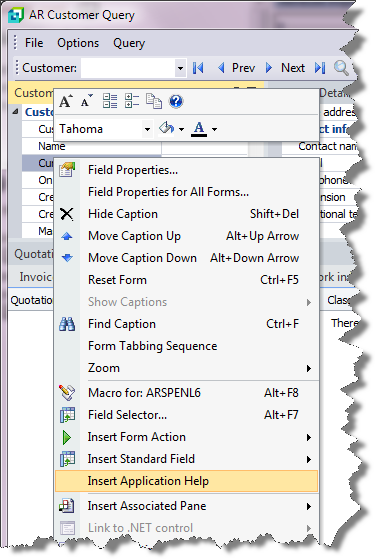You use this program to calculate and optionally update the local equivalent balances of foreign currency customers. This is necessary when fluctuating currency exchange rates result in inaccurately reflecting the value of outstanding invoices.
This enables you to restate the value of outstanding foreign currency customer invoices (where a fixed exchange rate was not applied) at a revised exchange rate and update the General Ledger accordingly with the currency variance.
You typically do this to meet statutory requirements that require you to restate your debt at a realistic rate of exchange at reporting dates (i.e. when you prepare your Balance Sheet).
| Field | Description |
|---|---|
| Start Processing | Select this to generate the revaluation process
according to the selections you made. The currency variance is calculated as: (Currency rate of invoice when captured - Current currency rate) x Invoice balance |
| Select this to print the information currently displayed in the Report pane. | |
| Save Form Values | This option is only enabled in Design mode (Automation Design). Your selections are saved and applied when the
program is run in automated mode. Form values and defaults are applied at operator level. They are not saved at role or group level. |
| Field | Description | ||||||
|---|---|---|---|---|---|---|---|
| Option | |||||||
| Report options |
|
||||||
| Branch selection | Indicate the AR branch(es) for which to run the revaluation calculation | ||||||
| Currency selection | Indicate the foreign currency(ies) for which to run the revaluation calculation | ||||||
| After processing completed |
These options are displayed within programs that can be automated. They enable you to indicate the action you want to perform once processing is complete (see Automation Design). |
The information in this pane is displayed once processing is complete, providing you did not select the option: After processing completed > Close this application.
The results of processing the function you selected are displayed.
Although XAML coding has been applied to the listview columns to space the information out on the report, we recommend that you remove all columns except for the Customer details, Document details and Amounts columns from the listview before printing the report. These three columns contain multiple values which allows the information to be printed in a legible format.
You use the After processing completed options to print or email this information.
Before running the AR Exchange Rate Revaluation program, you need to:
-
use the Currencies program to enter the required exchange rate in the Selling exchange rate field for each foreign currency you want to revalue.
-
preferably define the interface ledger accounts by branch/currency for the revaluation of outstanding foreign currency customer invoices using the AR Currency Variance GL Interface program.
-
Currencies defined with a Fixed exchange rate (Currencies) are excluded by the AR Exchange Rate Revaluation program.
If you set the currency to Fixed, it is assumed that you have applied a hedge against the currency (e.g. you have taken foreign exchange cover). Transactions with a fixed exchange rate are therefore not revalued for the purposes of financial reporting, but are reported at the rate of the hedge.
-
When transactions are revalued, the exchange rate at the time of creating the transaction is overwritten with the current exchange rate at the time of revaluation. This means that the original value at entry time can no longer be calculated.
-
When running the report in Report and update mode, exchange rate variances resulting from the revaluation are posted to the Unrealized variance ledger account defined in the AR Currency Variance GL Interface program (General Ledger Integration - Variance Interfaces).
A warning message is displayed if no Unrealized variance account is defined. If you select to continue, then the variances are posted to the Exchange rate variance account defined against the General Ledger Integration program.
![[Note]](images/note.png)
The Realized variance GL code is always used for all exchange rate variances in a C-ISAM environment. The ability to define a Realized and an Unrealized variance GL code is only available in a SQL environment.
-
Exchange variance calculation
Exchange Variance = [Round to 2 decimals (Invoice balance * Selling exchange rate) ] - [Round to 2 decimals (Invoice balance* Invoice exchange rate)].
Inserting Application Help
You would typically follow this procedure to display help for the current program in a customized pane that can be pinned to the program window.
Information includes step-by-step instructions for the various functions available within the program, including a brief overview of what the program does, what setup options are required and how to personalize the program.
-
Open the program for which you want to insert application help into a customized pane.
This functionality is only available for a program that has panes.
-
Right-click any form field.
You can also click the triangle menu icon that appears in the title area of a pane.
-
Select Insert Application Help from the context-sensitive menu.
The application help appears in a pane within your program. You can reposition the pane using the docking stickers or pin it to the program window.
Removing the Application Help pane
If you no longer want to display application help in a pane for your current program, you can simply remove it.
-
Select the Close icon in the right-hand corner of the application help pane.
-
Confirm that you want to delete the pane.

